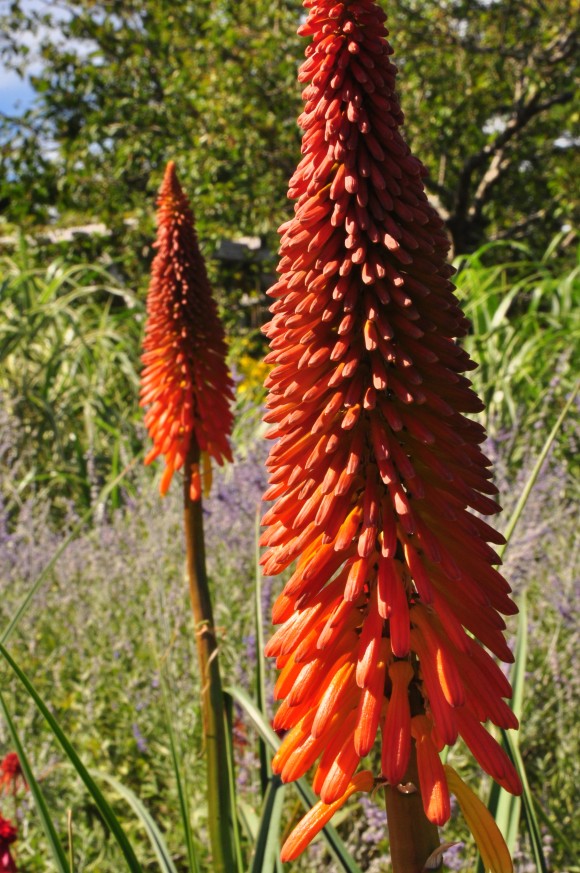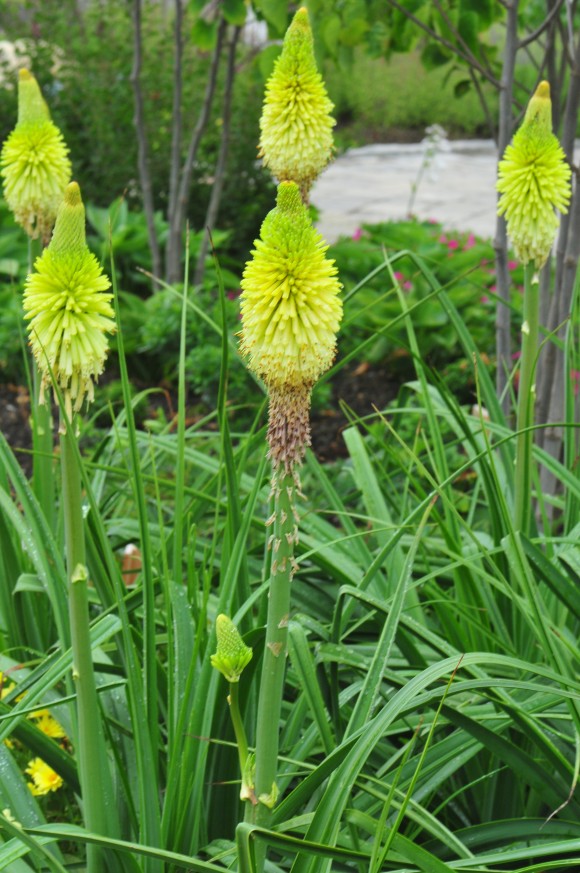Yes, we are growing South African plants here in Maine. They are growing outside in the ground, and we leave them out all winter. I am referring to the plants in the genus Kniphofia. I wrote a post earlier this year on Kniphofia and this is a follow-up to talk about how some of them have done at CMBG this year.
I have always liked Kniphofia because they have a flower unlike any others in our northern hemisphere, east coast gardens. On the West Coast, where folks are lucky enough to grow aloes, they are blessed with a spiky abundance of flowering plants. Not us, here on the coast of Maine.
Let’s see… we can grow Liatris and, and… Kniphofia. That is about it. Maybe there are others, and I am sure to see them tomorrow in the garden.

Kniphofia consists of 70 different species of flowering plants native to the southern parts of the African continent. There are not a lot of plants from this area that are cold hardy, so Kniphofia definitely breaks the mold.
Also called red-hot pokers or torch lilies, these plants are somewhat distant relatives of daylilies. The leaves are vaguely similar, but the flowers definitely set them apart. The spikes of red, yellow, and orange tubular flowers are eye-catching to all who encounter them. The tubular flowers provide nectar to bees and small birds.

Some species are hardy to zones 5 and 6, but in these areas, some winter protection should be provided.
At Coastal Maine Botanical Garden, we have several clumps of Kniphofia northiae that survived this past winter when we dipped to zero degrees F and had a week when we did not get above 20 degrees F. Inspired by the appearance of this red-hot poker, we planted even more Kniphofia to see which ones would survive.
One big winner that has just begun to flower is Kniphofia ‘Lola.‘ Every time I mention this plant, I think of the 70’s song by the Kinks. Oh, well, regardless of her (or his) name, Lola has large, strapping leaves up to 3′ in height and flower spikes up to 5’ in height. It is a real show-stopper.
In the next month or so, I will be sure to cover K. ‘Lola’ with a winter coat to ensure that it returns next year. Also, this winter, we will be on the lookout for more Kniphofia to try in our gardens.
–Rodney
I have kniphofia growing in my Massachusetts garden, in fact there are two stray spikes in bloom today. It survived a Massachusetts winter and an historic blizzard. We’ll see if it comes back next year. I know people who have successfully overwintered Crocosmia, which is a SA native, but I have not been able to.
That is wonderful. Do you know which Kniphofia you have in your garden?
good
novaledlights . com